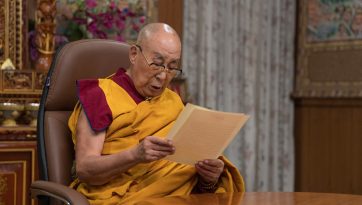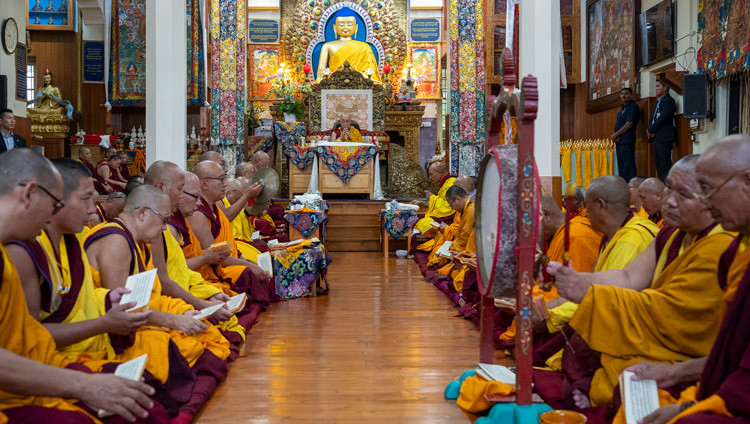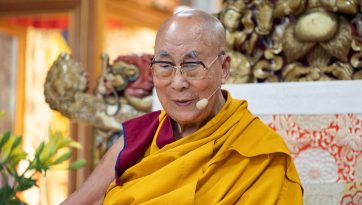Conferring of an Honorary Master’s Degree by the University of Pisa and Second Session of MindScience Symposium
September 21, 2017
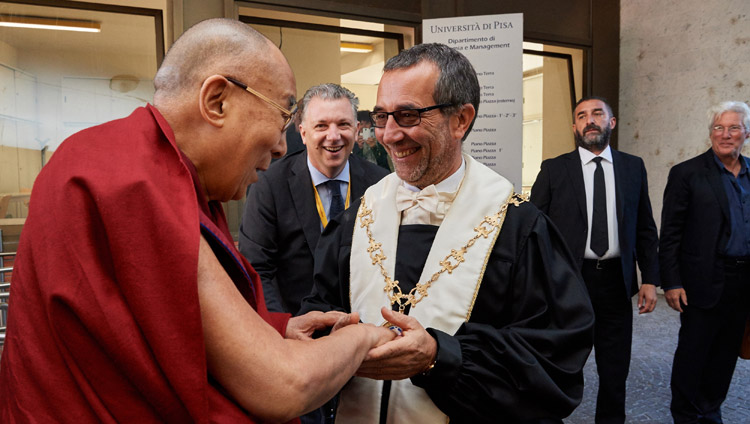
In his introduction to the occasion, the Rector mentioned that His Holiness is the 14th Dalai Lama. He noted that the first, Gendun Drup, was born in the 14th century not long after the founding of the University of Pisa. He also remarked that today was the International Day of Peace and that His Holiness was a Nobel Peace Laureate.
Prof Angelo Gemignami spoke about the University’s motivations in awarding His Holiness an honorary degree. He referred to him as the most eminent guide of Tibetan Buddhism, the author of 11 books and numerous articles that have contributed to the understanding of psychology and a proponent of the two pillars of Buddhism—compassion and wisdom. Francisco Varela, Daniel Goleman, Paul Ekman and Richard Davidson were mentioned among his distinguished collaborators. His motivation was summarized in the following quotation: “as in science so in Buddhism, understanding the nature of reality is pursued by means of critical investigation.”
In the Laudatio, or words of praise that followed, Amy Cohen Varela noted that “his is a compassion that acknowledges our common humanity.” She added that she had observed this personally in His Holiness’s close friendship with her late husband, Francisco Varela.
The Rector then conferred on His Holiness the Master’s Degree Honoris Causa in Clinical and Health Psychology and the hall was filled with applause.
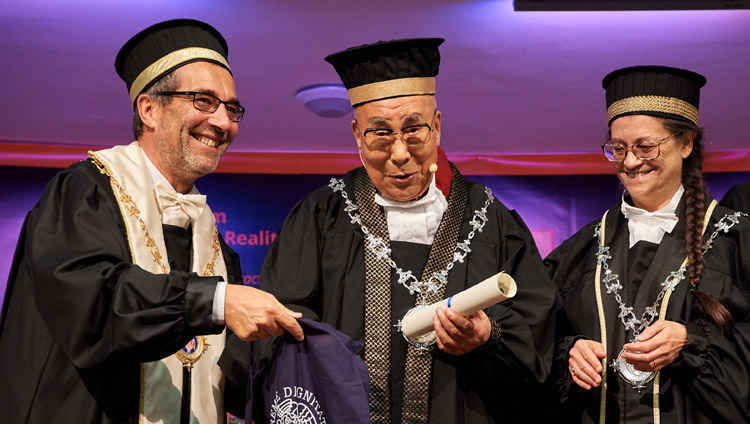
“Respected scholars, brothers and sisters,” His Holiness responded, “I am deeply honoured to have been awarded this degree. I appreciate what the speakers have just said, but some of their praise was exaggerated. I consider myself to be one among 7 billion human beings. I believe having a sense of the oneness of all humanity is relevant in today’s world. Too many of the problems we face pivot on a division between ‘us’ and ‘them’.
“Where other major religions talk about the whole of humanity, Buddhism concerns itself with all sentient beings. The Sanskrit tradition, rooted in the Pali tradition, teaches about cultivating infinite love through reason. I’ve been curious since I was a child. I’ve always wanted to know how and why. How does this work? Why did that happen?
“The Buddha advised, ‘As the wise test gold by burning, cutting and rubbing, so, bhikshus, should you accept my words—after testing them, and not merely out of respect for me.’ He was not only a religious teacher, but a great thinker. This approach of investigation and experiment was embraced by the scholars of the Nalanda Tradition such as Nagarjuna, Dignaga and Dharmakirti who were rigorous in their application of reason. Thus, I too have long admired the scientific approach.
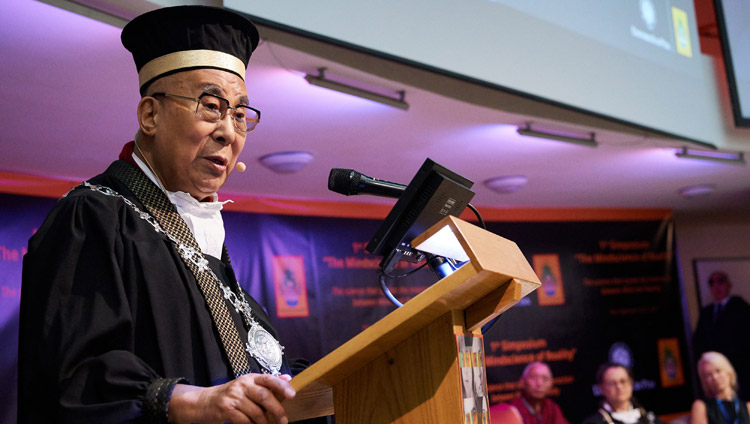
“I count myself as half a Buddhist monk and half a scientist. This honorary degree gives me encouragement. I am now 82 years old and I pledge that in my remaining15-20 years I will dedicate myself to further fostering an understanding of the science of mind.”
Prof Riccardo Zucchi thanked His Holiness for a speech that he regarded as having opened the second session of the MindScience Symposium focussing on the theme Mindscience vs. Neuroscience. He called on Prof Donald Hoffman to make his presentation, ‘The Case against a Physical Base for Consciousness’.
Hoffman began by asking, ‘Do we see reality as it is?’ We assume we do, but he showed a number of images which demonstrated that we contribute to the reality we see. He asked, ‘Does matter make consciousness?’ responding that most of his neuroscience colleagues think it does.
Repeating the question, ‘Do we see reality as it is?’ he asked, ‘Could we be wrong?’ He pointed out that views of the earth had changed from its being flat to its being round and in orbit around the sun.
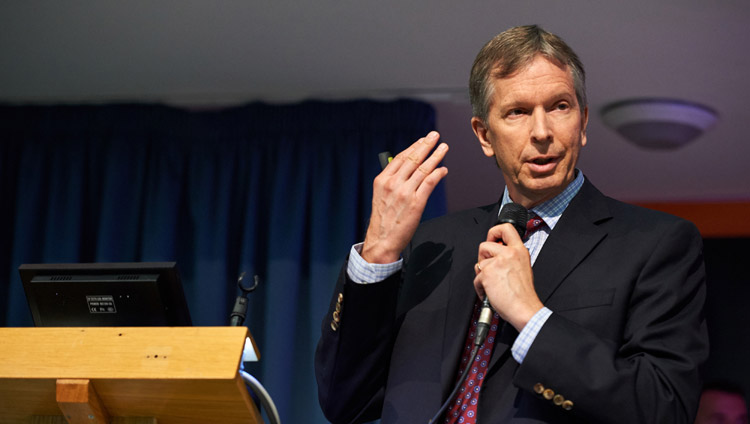
Since one third of the brain is involved with vision, some people say we create what we see. Neuroscientists say we ‘reconstruct’ reality. Hoffman referred to his ‘Fitness Beats Truth Theorem’, which proposes that choices in that reconstruction are made not on the basis of what is real, but on the basis of what fits our survival.
Invited to comment, His Holiness mentioned that Nagarjuna advocated analysing how things and events exist. If you analyse space, you can’t pinpoint what it is. Things and events we see and experience are mental constructs; we apply mental labels to them. This doesn’t mean things don’t exist, but that they don’t exist in their own right, in and of themselves. They exist in relation to our perception of them.
The Two Truths reveal a conventional and ultimate existence. Under analysis we can’t find fire, nor can we find our finger, but if we put our finger in the fire, it gets burnt and gives pain.
His Holiness continued to explain that according to a Tibetan Buddhist understanding of the workings of the mind we have sensory consciousness and mental consciousness. Visual consciousness sees a thing, but can’t ascertain it as it is; that is a conceptual process.
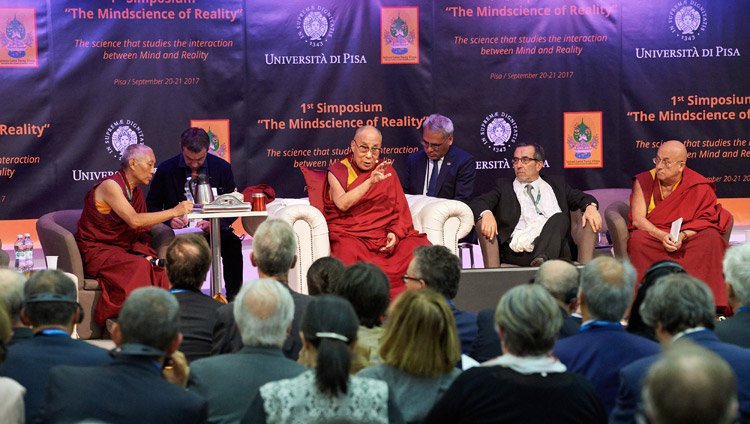
His Holiness outlined different levels of consciousness. Ordinary waking consciousness, dominated as it is by sensory consciousness, is relatively coarse. Subtler is the consciousness that prevails when we dream and sensory consciousness is inactive. Subtler still is consciousness in deep sleep, while the subtlest consciousness manifests at the time of death.
At that time the heart stops and the brain dies. Yet there are cases of people with meditative experience whose bodies remain fresh despite undergoing clinical death. They may remain in this state for a few days or a few weeks. Buddhist psychology explains that this is because the subtlest mind has not yet left the body, and when it does, the body declines. His Holiness mentioned that scientists are taking an interest in these phenomena, which are not easy to investigate.
He also reported the story of a meditative adept in Tibet under arrest and being taken to a class struggle session. He asked for a few moments rest on the way, sat in meditation and engaged in the practice of transference of consciousness. He ejected his consciousness and died. His Holiness referred to such stories as mysteries still to be explained.
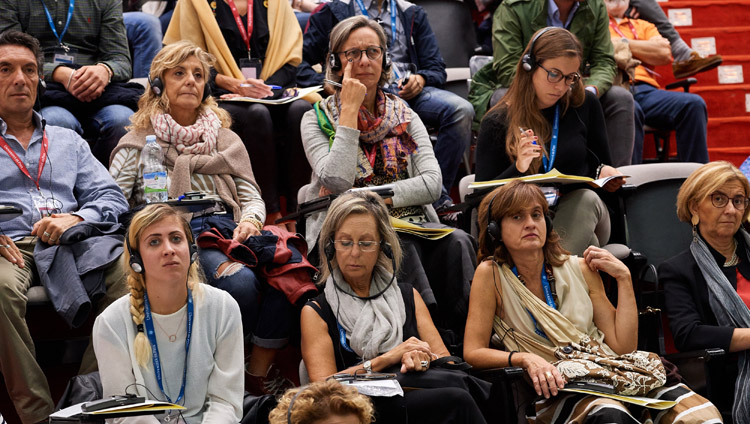
Prof Steven Laureys was unable to attend the symposium in person and gave his presentation on ‘(Un)Consciousness & the Severely Damaged Brain’ via a video link. He also asked what science can tell us about reality. He conceded that although a science of consciousness is being developed, it has as yet failed to bridge the gap between mind and matter. However, he stressed the need to remain open-minded.
He stated that much has been learned about perceptual awareness, inner awareness and external awareness, through magnetic resonance imaging. He also touched on what is being learned about comatose patients and those with locked-in syndrome. This can be compared with what’s been learned about the mind and brain when examining meditators in meditation. More is also being learned about patients’ near death experiences.
In commenting on what he had seen and heard, His Holiness stated that mental consciousness is what we need to know more about. Following Laureys’ lead he told the story of a government official he knew in Tibet, whose mother had announced that while she slept for a week, she was not to be disturbed. There was, of course, no machinery available to monitor what was going on, but it seemed that the woman’s dream body left her physical form and in the course of the week travelled here and there. Her subsequent reports of what she’d seen and heard apparently complied with accounts of what had actually been going on in the places she described.
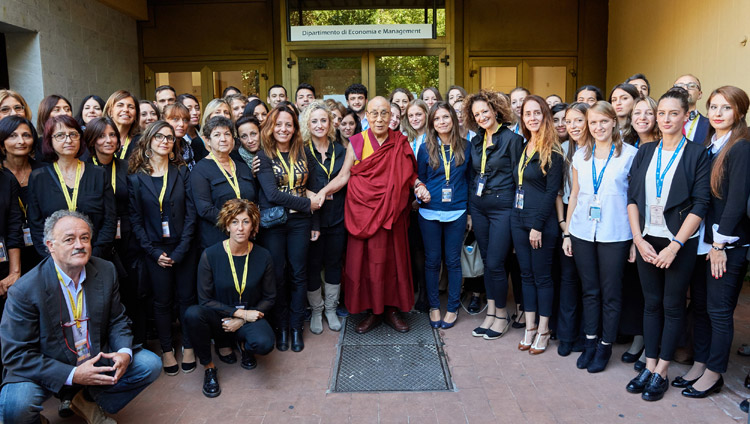
Besides such anecdotes, His Holiness announced that as a result of a project he instigated, material related to Buddhist science and philosophy has been extracted and compiled from the vast canonical literature translated into Tibetan. Four volumes have been published in Tibetan. Of these, a first volume dealing with science of the external world and a second volume dealing with states of mind, and so forth, have been published in Chinese and are due to be published shortly in English and other European languages.
His Holiness ate lunch with presenters and organizers of the symposium before returning to his hotel. Tomorrow, he will leave Pisa and travel to Riga in Latvia, where he is to give Buddhist teachings over three days.
Source: https://www.dalailama.com/news/2017/conferring-of-an-honorary-masters-degree-by-the-university-of-pisa-and-second-session-of-mindscience-symposium

